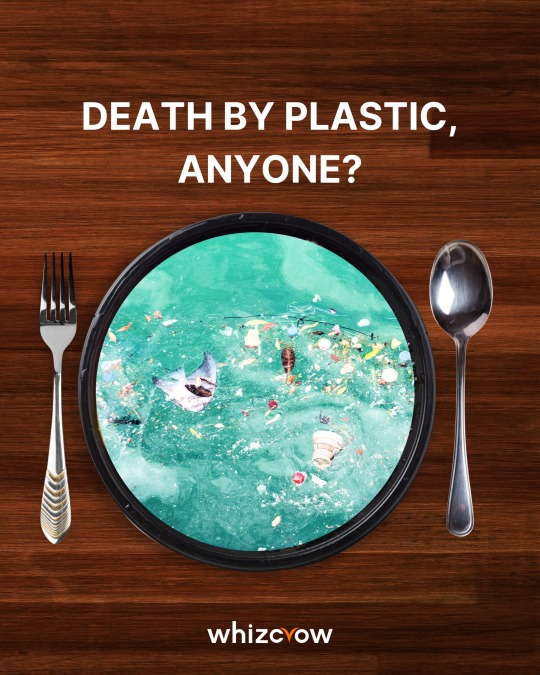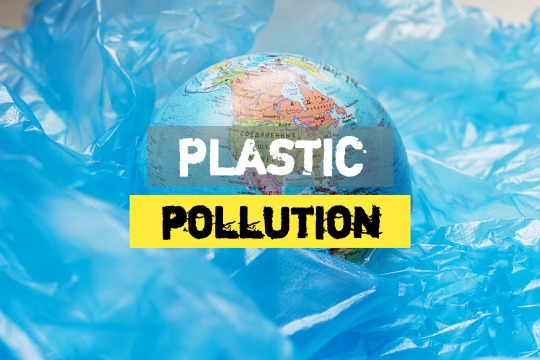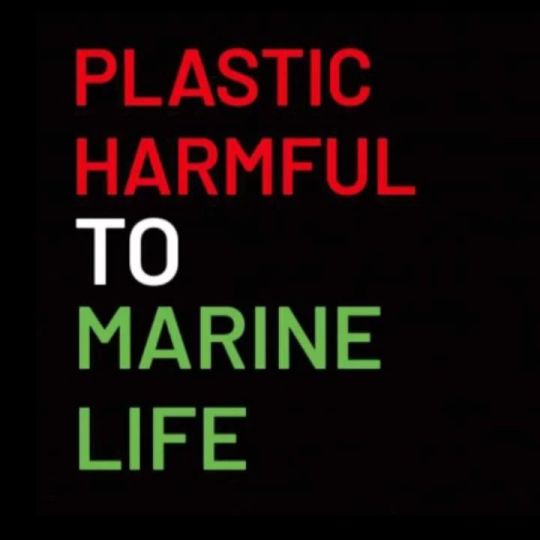#SaveMarineLife
Explore tagged Tumblr posts
Text
How can we reduce plastic pollution in the oceans and save marine life?
Plastic pollution is a growing threat to our oceans and marine life. By choosing reusable products, reducing plastic consumption, and properly disposing of waste, we can help prevent plastic from reaching the ocean. Supporting initiatives like beach cleanups and advocating for policies that reduce plastic production are also essential steps. Every small effort counts in protecting marine ecosystems and ensuring a cleaner, healthier ocean for future generations. Let's work together to turn the tide against plastic pollution.
#plasticpollution
#savemarinelife
#saynotoplastic
2 notes
·
View notes
Text
Is In-Situ Burning Safe for Marine Life? #sciencefather#InSituBurning
In-situ burning (ISB) is a method used to remove oil spills by burning the oil directly on the water's surface. While it can rapidly reduce surface oil, the technique raises serious concerns about its impact on marine life, including toxic residue, air pollution, and habitat destruction. Balancing quick cleanup with ecological safety remains a major challenge. Visit Our Website : http://biotechnologyscientist.com Contact Us : [email protected] Nomination Link : https://biotechnologyscientist.com/award-nomination/?ecategory=Awards&rcategory=Awardee #InSituBurning #OilSpillResponse #MarineLifeProtection #EnvironmentalImpact #OceanConservation #OilSpillCleanup #MarinePollution #WildlifeSafety #EcoFriendlySolutions #EnvironmentalAwareness #ProtectOurOceans #ClimateAction #SaveMarineLife #PollutionControl #SustainablePractices #OceanHealth #EnvironmentalSafety #MarineEcosystem #OilSpillPrevention #EcoRestoration
0 notes
Text
Join the movement 🌊🌍 Warrior Beverages is on a mission to end Ocean Pollution. Better For You, Better For Our Planet!
#WarriorBeverages #SaveOurOceans #StopOceanPollution #BetterForYou #BetterForOurPlanet #GoGreen #EcoWarrior #SustainableLiving #ProtectOurPlanet #CleanSeas #SaveMarineLife #NoMorePlastic #OceanConservation #BeTheChange #LoveOurPlanet #cpg #water
0 notes
Photo

Beach cleanup Ao Nang beach Krabi Thailand. #beachcleanup #nature #naturelovers #savemarinelife https://www.instagram.com/p/CTq6EfbvpPO/?utm_medium=tumblr
2 notes
·
View notes
Text

1 note
·
View note
Video
instagram
For this #MondayMotivation enjoy this awesome video of a happy whale breaching along the Wild Coast of South Africa by #wildographer, dive master & owner of @merubisi, @mutlu.bora ・・・ Let them plan your ultimate game watching / photographic safari to Southern Africa and make your dreams come true. #enquirenow https://www.merubisi-safaris.com/about ・・・ #Wildography #AfricanSafaris #MerubisiSafaris #mutlubora #africansafari #savetheoceans #savethewhales #savemarinelife #wildlifeconservation #protectwhatyoulove #endangeredspecies #blueplanet #amazingcreatures #deepblue #marinelife #wildgeography #wildlifeplanet #oceansafari #wildandfree #earthfocus #wildlifelovers #ourplanetdaily #wildlifevideos https://www.instagram.com/p/B88xKqKAmcm/?igshid=1rgdnuh3nsf7e
#mondaymotivation#wildographer#enquirenow#wildography#africansafaris#merubisisafaris#mutlubora#africansafari#savetheoceans#savethewhales#savemarinelife#wildlifeconservation#protectwhatyoulove#endangeredspecies#blueplanet#amazingcreatures#deepblue#marinelife#wildgeography#wildlifeplanet#oceansafari#wildandfree#earthfocus#wildlifelovers#ourplanetdaily#wildlifevideos
28 notes
·
View notes
Video
tumblr
Eric Balfour joined Conservation Org + Tik Tok to save and protect our oceans. Will you join him?! “Did you know that by 2050 there will be more plastic then fish in the worlds oceans? That's right! Oceans and marinelife are in more trouble then ever before but you can help protect them. That's why I’m proud to join Conservation International and TikTok to address Marine plastic polution and to protect our oceans for a better future. Download and open TikTok, share a video and tell us how you reduce plastic and save our oceans, For every video you upload WITH the hashtag "save our oceans" (#saveouroceans) to TikTok till september 9th, TikTok is donating $ 2 to Conservation International to help save 3000 km² of ocean. Thank you!“ See Eric’s video on TikTok Here!
#ericbalfour#eric balfour#dukecrocker#duke crocker#haven#oceanconservationist#ocean conservationist#saveouroceans#save our oceans#savemarinelife#save marine life#stoppollution#stop pollution#banplastic#ban plastic#stopplasticpollution#stop plastic pollution#recycleplastic#recycle plastic#tiktok#tik tok#conservationorg#conservation org#conservation international#conservationinternational#share#protectwhatyoulove#protect what you love
4 notes
·
View notes
Video
instagram
Credit © 🎬 🖋 @aeroture_aus Beautiful waters Beautiful creatures PLEASE HELP!!!! 😢🙏 and SHARE !!! 🙏 😢BUT...if you look closely, you’ll see one of these beautiful whales has a large net stuck around its body. As it swims, the net drags behind it. It’s unfortunate that in most cases marine creatures die from the plastics that pollute our waters either from eating plastic and rubbish thinking its food or suffocating them as things like fishing nets, fishing line and other plastic twist around their bodies. Human interference can be both harmful and helpful. I love my job and I love the opportunities I have travelling and learning more about marine life, land animals and our environments, but it does also show me the harshness of pollution. I’ve been in contact with marine parks and wildlife to investigate and hopefully find this whale to cut it free from the net. Please share this post for awareness. Help me clean up and create a better environment for our marine and land animals, for us and our futures to come. . . . #seeaustralia #help #helpanimals #protect #protectanimals #whales #polution #stop #savemarinelife #marinelife #humpbackwhale #parksandwildlife #perthphotographer #aeroture #michaelhaluwana #perthnow #whalesandorcas #animallovers #westernaustralia #share https://www.instagram.com/p/B3UwG6igvaf/?igshid=1a37h5xlbocgs
#seeaustralia#help#helpanimals#protect#protectanimals#whales#polution#stop#savemarinelife#marinelife#humpbackwhale#parksandwildlife#perthphotographer#aeroture#michaelhaluwana#perthnow#whalesandorcas#animallovers#westernaustralia#share
1 note
·
View note
Video
instagram
Credit to @care2 : A gorgeous blue swordfish swam to shore to lay her eggs only to be stoned to death by gleeful beachcombers! Go to link in bio to sign and tell authorities to find & punish these thoughtless tourists! #nature #ocean #savemarinelife https://www.instagram.com/p/B0UIQP2g2TX/?igshid=1kjqxc3spp01g
1 note
·
View note
Photo

🐝🐛🦋🐥🐸🦄🐷🐥🦇🦆🌻 credit ‘Summertime’ … Gershwin et al ‘One of these mornings you're gonna rise up singing And you'll spread your wings and you'll take to the sky’ awesome thank you for continuing to following me dare to fly you gonna rise be kind - create not hate debzoid buzz buzz #savethebees #splishsplash #savemarinelife 🐬🐙🐠🦀😁🐙 https://www.instagram.com/p/BznEedRFAnH/?igshid=181fdja2rxagu
1 note
·
View note
Text

9-23 million tonnes of plastic waste reach our lakes, rivers, and seas every year, while 11 million tonnes flow into our precious oceans. 🌊🌍 Microplastics, invisible but insidious, invade our food, water, and air. 💔 It's time for a constant change every day. Together, let's #BeatPlasticPollution and protect our planet for future generations. 🌱
#WhizCrow#BeatPlasticPollution#WorldEnvironmentDay#SaveOurOceans#CleanSeas#PlasticPollution#PlasticFreeFuture#EnvironmentalAwareness#SaveMarineLife#SayNoToPlastic#PlanetOverPlastic#GoGreen#FollowUsForMore
0 notes
Photo

#stopsingleuseplastic #savetheplanet #savemarinelife #plasticislikekarma #stopoceanpollution https://www.instagram.com/p/BxAeaNVh63DLeefxqqEiNpI3H9voIHkcJDYpKo0/?utm_source=ig_tumblr_share&igshid=gmz8p0larg04
1 note
·
View note
Text
Avoid Plastics- Arise Cleanliness & Invite Happiness.
Stop Plastic Pollution.

If there is one type of waste problem, which is ubiquitous, it is Plastic Pollution. A few important facts about plastic pollution as per United Nations Environment Program (UNEP):
Since the early of 1950s, more than 8.3 billion tonnes of plastic has been produced. Only 9% of all plastic waste ever produced has been recycled and about 12% has been incinerated. About 60% of that plastic has ended up in either a landfill or the natural environment.
About 8 million tonnes of plastic end up in the world’s oceans every year. Rivers carry plastic waste from deep inland to the sea. This contributes to marine pollution. Rivers like Ganga, Brahmaputra, Indus, Mekong, Yellow, Yangtze, Amur, Nile and Niger are some of the major rivers carrying plastic waste to oceanic environment.
Globally about 300 million tonnes of plastic waste is generated every year. Half of all plastic produced worldwide is used only once and then trashed away. Most common examples of single-use plastics are cigarette butts, pkastic drinking bottles, plastic bottle caps, food wrappers, plastic grocery bags, plastic lids, straws and stirrers, and foam take-away containers.
Plastic pollution has become an all-pervasive problem, with some scientists suggesting that it could serve as a geological indicator of the Anthropocene era!
Developed countries like the United States, Japan and many European countries produce significant amounts of plastic waste. Per capita annual plastic consumption in the USA is about 100 kg, in Europe it is around 65 kg and in China is around 40 kg. This is much higher than the global average of 28 kg of plastic use per person annually.
However, developed regions like European Union, Japan and the USA are relatively good at managing plastic waste. Developing countries like China, Vietnam, Indonesia etc. are fast growing. As consumptions boom, plastic waste generation also increases.
The most worrisome feature of plastic pollution is that it remains in the environment for countries. Most plastics are non-biodegradable. Over time, they slowly break down into smaller fragments known as ‘Microplastics’. These are extremely small plastic pieces that are less than 5mm in size. Microplastics can come from multiple sources and can be either primary microplastic or secondary microplastic.
Primary microplastics are tiny particles designed for commercial use. One example is of microbeads. These are very tiny pieces of manufactured polyethylene plastic that are added as exfoliants to health and beauty products, like cleansers and toothpaste.
Secondary microplastics are those which are formed from larger plastic debris that degrades into smaller and smaller pieces. The breakdown can take place due to the sun’s radiation or the action of ocean waves.

Plastic bags can block waterways and exacerbate natural disasters like flooding. For example, one of the reasons for the Mumbai flooding of 2019 was plastics clogging the drainage system of the city.
By clogging sewers, plastics provide breeding grounds for mosquitoes and pests. This was because plastic bags can increase the transmission of vector-borne diseases like malaria.
Plastic bags are often mistaken for food by turtles and dolphins. Marine organisms like dolphins, turtles, whales, and fishes can ingest them and high concentrations of plastic materials, have been found blocking the airways and stomachs of hundreds of species.
Microplastics are a bigger problem as it is easily ingestible by fish. This way, plastics eventually enter human food chains. Microplastics have been detected in marine organisms from plankton to whales, in commercial seafood, and even in drinking water.
Styrofoam products are generally used for making disposable plastic cutlery like glasses, cups etc, It contains carcinogenic chemicals like styrene and benzene. These, if ingested, can damage the nervous systems, lungs and reproductive organs. The toxins in styrofoam containers can leach into food and drinks.
Disposing of plastic waste by burning it, in open-air pits releases harmful gases like furan and dioxin.

BEAT PLASTIC POLLUTION
To tackle the plastic waste menace, the theme of UNEP’s World Environment Day 2018 was ‘Beat Plastic Pollution’. World Environment Day 2018 was hosted by India. The objective was to build momentum to fight the plastic waste problem globally. Over here, India for the first time made a commitment that it will ban all single-use plastic by 2022. however, later at the United Nations Environment Assembly’s meeting (September 2019), this was revised and India committed to reducing plastic use by the year 2030.
Recommendations offered by the UNEP to policymakers to tackle plastic pollution were:
Government need to improve waste management practice. They may introduce financial incentives to change the habits of consumers, retailers and manufacturers.
Promote eco-friendly alternatives to plastics. Examples include biodegradable cutlery, and bamboo straws used in India.
Strong government policies are needed for encouraging a circular model of economy which places emphasis on reuse and recycling.
Educate consumers to enable voluntary plastic reduction strategies.
Successfully implement bans or levies on the use and sale of single-use plastics. Countries like Kenya, Botswana, Peru and Chile have already done that.
Later in September 2018, the UNEP along with European Union also launched the Global Plastics Platform to reduce plastic pollution. It is a network of member states to support countries and cities in establishing policies to reduce plastic pollution. Support will be provided for the transition to a more circular economy.
0 notes
Photo

PLASTIC IS ALSO HARMUL TO MARINE LIFE ALSO🐟🐬🐋 #xs #h²o #black #ecofriendly #ecofriendlyproducts #avoidplasticpackaging #avoidplastic #saveearth #pollutionfreeenvironment #pollutionfreeworld #plasticfree #cleanoceanwater#saveocean #savemarinelife #savemamals https://www.instagram.com/p/CmZkeSmvj-l/?igshid=NGJjMDIxMWI=
#xs#h²o#black#ecofriendly#ecofriendlyproducts#avoidplasticpackaging#avoidplastic#saveearth#pollutionfreeenvironment#pollutionfreeworld#plasticfree#cleanoceanwater#saveocean#savemarinelife#savemamals
0 notes
Photo

Day 18 “Bottle” Let’s STOP polluting our marine, otherwise our octopus will need bottle to survive 😞 @inktober @inktoberworld2018 @inktoberprompts @inktoberindia #internationalartist #indianartists #inktoberday18bottle #inktoberday18 #ink #inktober #savemarinelife #saveenvironment #octupus #octupusinbottle #kdkaur91 #kdkaurgallery #environment #marinelife #lovenature #dontpolluteouroceans #motherearth #bottle #bottleneck (at Delhi) https://www.instagram.com/p/BpKLgH0gxJ6/?utm_source=ig_tumblr_share&igshid=j9gqndxz3nt0
#internationalartist#indianartists#inktoberday18bottle#inktoberday18#ink#inktober#savemarinelife#saveenvironment#octupus#octupusinbottle#kdkaur91#kdkaurgallery#environment#marinelife#lovenature#dontpolluteouroceans#motherearth#bottle#bottleneck
2 notes
·
View notes
